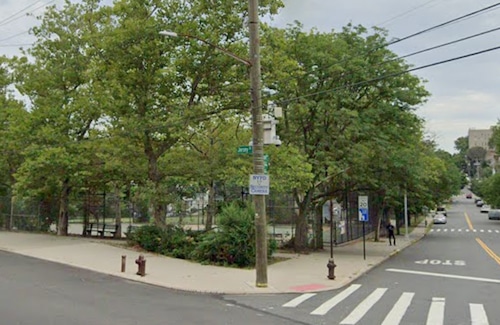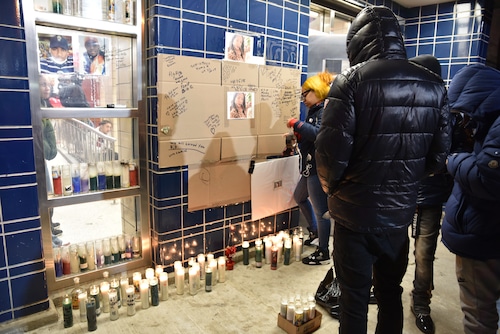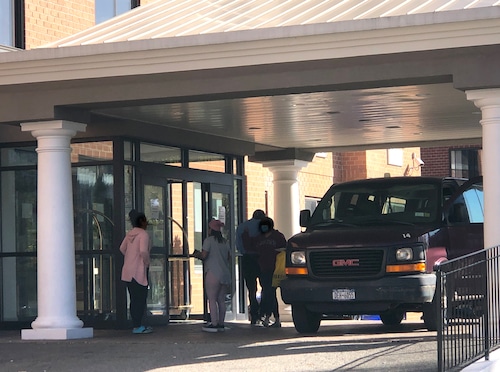NEW YORK In a case that became a focal point for contrasting opinions on public safety, bravery, and vigilantism, a Marine veteran who choked an irate subway passenger was found not guilty on Monday.
Daniel Penny was found not guilty of criminally negligent homicide in the death of Jordan Neely last year by a Manhattan jury. Earlier in discussions, a more serious manslaughter charge was dropped because the jury couldn’t agree on it.
Both charges were felonies that may result in jail time.
For roughly six minutes, Penny, 26, held Jordan Neely by the neck in a chokehold that was partially captured on camera by other subway patrons.
According to Penny’s attorneys, he was defending himself and other subway users against a tumultuous, mentally ill man who was making frightening gestures and statements. A city medical examiner’s conclusion that Neely died from the chokehold was also contested by the defense.
According to the prosecution, Penny reacted very violently to a person he saw as a threat rather than a human being.
Numerous American fault lines, including those related to race, politics, crime, urban life, mental illness, and homelessness, were exacerbated by the case. Neely was Black. Penny is white.
While famous Democrats attended Neely’s burial, prominent Republicans depicted Penny as a hero, and there were occasionally tense protests outside the courthouse.
When jurors stated they were unable to reach a unanimous decision on the manslaughter allegation last Friday, the trial took a turbulent turn, and the result put a lid on it. At the prosecution’ request, which is uncommon for them to make during a trial, the court then dismissed it.
After four years in the Marines, Penny pursued a degree in architecture.
Neely, 30, was a former subway performer with a traumatic past. When he was a teenager, his mother was killed and put in a bag.
Neely established a reputation among Michael Jackson’s admirers and impersonators as a young man by performing homage to the superstar, replete with moonwalks, on the city’s streets and subways. However, Neely also battled mental illness following the death of his mother, whose boyfriend was found guilty of her murder.
Medical papers seen at the trial show that Neely, who was hospitalized for depression at the age of 14, was later diagnosed with schizophrenia, which occasionally caused him to have hallucinations and become paranoid. According to a 2019 hospital record, Neely also utilized the synthetic cannabinoid K2 and discovered it had a bad impact on his thoughts and actions. When he passed away, the medicine was still in his system.
According to medical records, Neely told a doctor in 2017 that he felt so worthless and miserable that he occasionally considered suicide as a result of being homeless, living in poverty, and having to scrounge through the trash for food.
On May 1, 2023, almost six years later, he got on a subway beneath Manhattan, threw his jacket to the ground, and said he was thirsty and hungry and didn’t care if he died or was arrested, according to witnesses. Some claimed that they were anxious or outright afraid for their lives, while others informed 911 operators that he attempted to attack passengers or suggested he would hurt riders.
Neely didn’t touch any people on the train, was unarmed, and had only a muffin in his pocket. He didn’t even approach anyone, according to several riders’ testimonies. However, another claimed that his lunging motions scared her so much that she protected her 5-year-old from him.
Neely told investigators at the scene that Penny, who was en route from a college class to the gym, approached him from behind, grabbed his neck, pulled him to the ground, and put him out.
Video from other passengers revealed that Neely tapped a bystander’s leg and pointed to him once during the roughly six-minute wait. Neely managed to release an arm for a moment at another point. However, he froze for about a minute before Penny let him go.
In the backdrop of one footage, an unseen onlooker shouted, “He’s dying.” Release him!
Although Penny’s attorneys pointed out that the witness’ account evolved over time, a witness who intervened to restrain Neely’s arms testified that he instructed Penny to release the victim.
Shortly after the confrontation, Penny informed officers that Neely had threatened to kill people and that the chokehold was an attempt to defuse the situation until the police could get there. The veteran claimed that because he wasn’t certain the doors were open and Neely squirmed occasionally, he waited after the train stopped.
I had no intention of hurting him. All I’m trying to do is prevent him from doing harm to others. He is making threats. After the police had read him his rights, Penny informed them that’s what we learn in the Marine Corps.
Yet, according to testimony from a Marine Corps combat instructor who trained Penny, the veteran abused a chokehold technique he had been taught. Additionally, prosecutors contend that any urgency to safeguard passengers vanished as soon as Penny’s actions were followed by the opening of the train doors at the following station.
Even while Penny admitted to using a chokehold or a chokehold to the police, one of his attorneys, Steven Raiser, described it as a Marine-taught chokehold that was adapted for use as a straightforward civilian restraint. The defense attorneys presented their own forensic pathologist to support their argument that Penny did not consistently apply enough pressure to kill Neely.
The defense pathologists disagreed with the municipal medical examiner’s decision, stating that Neely’s death was caused by a combination of K2, schizophrenia, his struggle and restraint, and a blood disorder that can cause lethal complications during exertion, rather than the chokehold.
Penny made the decision not to testify. However, a number of his friends, family, and fellow Marines did, characterizing him as a man of integrity, patriotism, and empathy.
Sister Jacqueline Penny told jurors that he was always a very gentle, quiet guy.
Penny was never charged by the prosecution with killing Neely on purpose. The manslaughter accusation, which was ultimately dropped, requires evidence that the defendant killed someone else carelessly. Criminally negligent homicide is when someone commits a significant, blameworthy act without realizing the danger.
Neely’s father filed a wrongful death lawsuit against Penny during the criminal trial.
Note: Every piece of content is rigorously reviewed by our team of experienced writers and editors to ensure its accuracy. Our writers use credible sources and adhere to strict fact-checking protocols to verify all claims and data before publication. If an error is identified, we promptly correct it and strive for transparency in all updates, feel free to reach out to us via email. We appreciate your trust and support!







+ There are no comments
Add yours